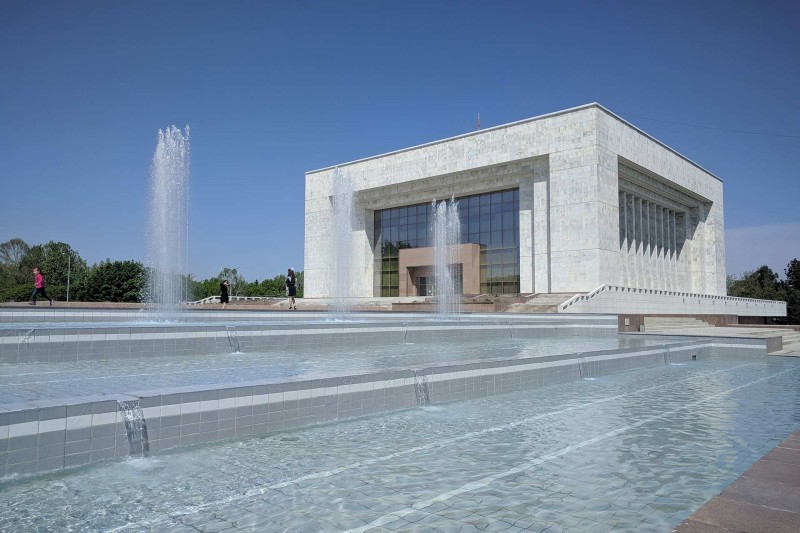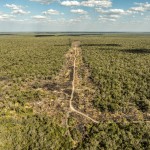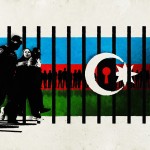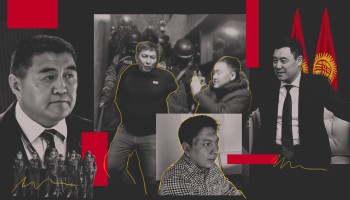For years, Kyrgyzstan’s National Historical Museum drew a steady stream of visitors curious to get a look at the traditional headdresses, 19th-century carpets, and Lenin posters housed in the Soviet modernist building in downtown Bishkek.
But after closing for reconstruction in 2016, the storied institution became a black hole. For five years, hardly anyone — including many staff members — had any idea of what was going on inside.
And as the renovation dragged on, more and more signs emerged that something was wrong.
First a fire broke out in the museum building, which some attributed to arson. Then the Kyrgyz government abruptly decided to bury a unique mummy from its collection, sparking outrage among archaeologists and the broader public. In 2020, a Kyrgyz court convicted the country’s former prime minister of misappropriating state funds during the renovations.
In May 2021, OCCRP and its Kyrgyz member center Kloop published an investigation revealing how the government and the museum administration had tried to cover up the destruction in the fire of at least 18 historic carpets from its main collection. But the Kyrgyz authorities ignored the investigation and, several months later, the museum reopened.
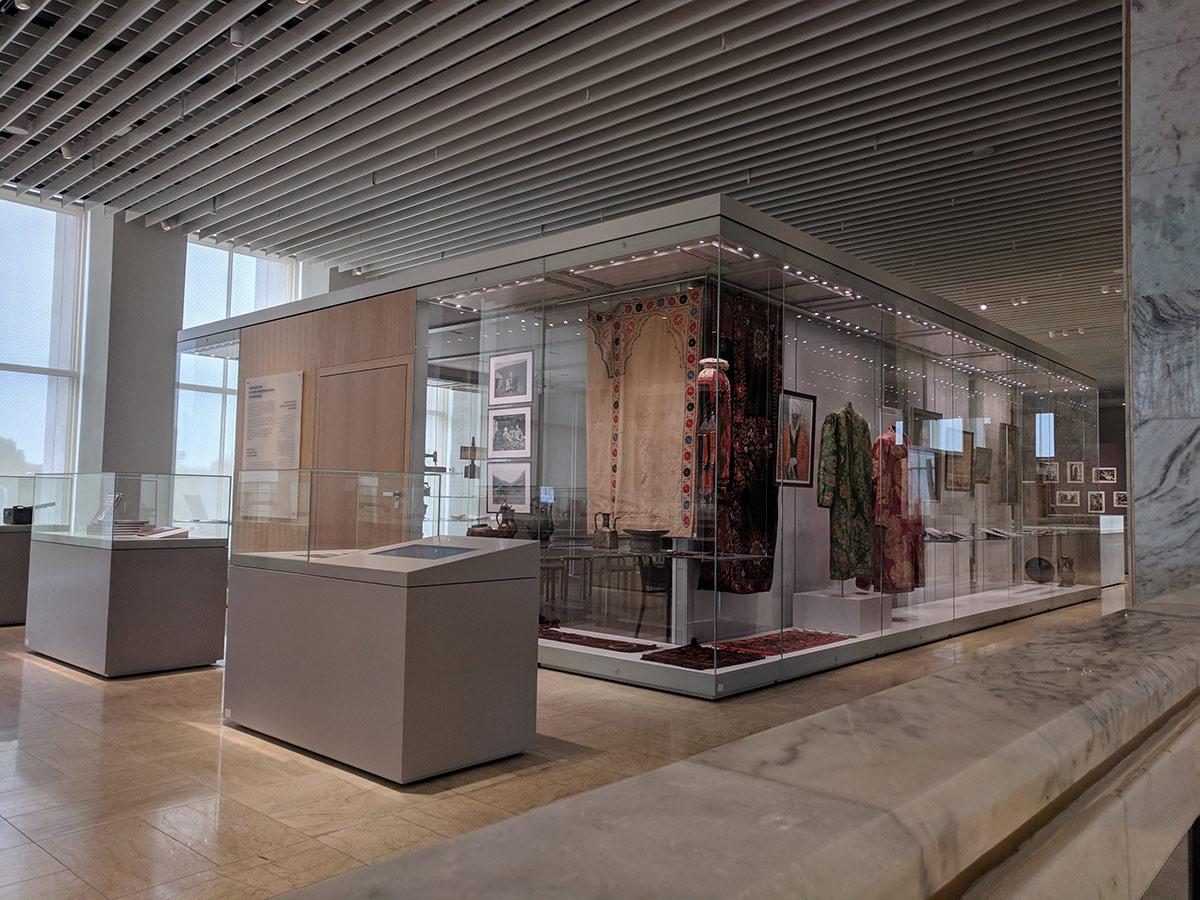 The inside of the newly renovated museum. (Photo: Azat Ruziev/Kloop)
The inside of the newly renovated museum. (Photo: Azat Ruziev/Kloop)
It appeared that an important question — whether other exhibit items had also been damaged — would remain unanswered.
But now, OCCRP and Kloop can reveal that the scope of the fire’s destruction was much greater than previously reported.
According to two letters sent from the museum to the Ministry of Culture and obtained by reporters, museum workers discovered hundreds of “partially and completely burnt objects of museum significance” while cleaning the museum’s basement in July 2021.
“Seven boxes of burnt museum items were found in the basement of the museum,” reads a curators report attached to one of the letters. “When they were opened, we discovered exhibits with identification numbers from the main collection and auxiliary collection: documents, paintings, books, [Soviet-era] posters, carpets.”
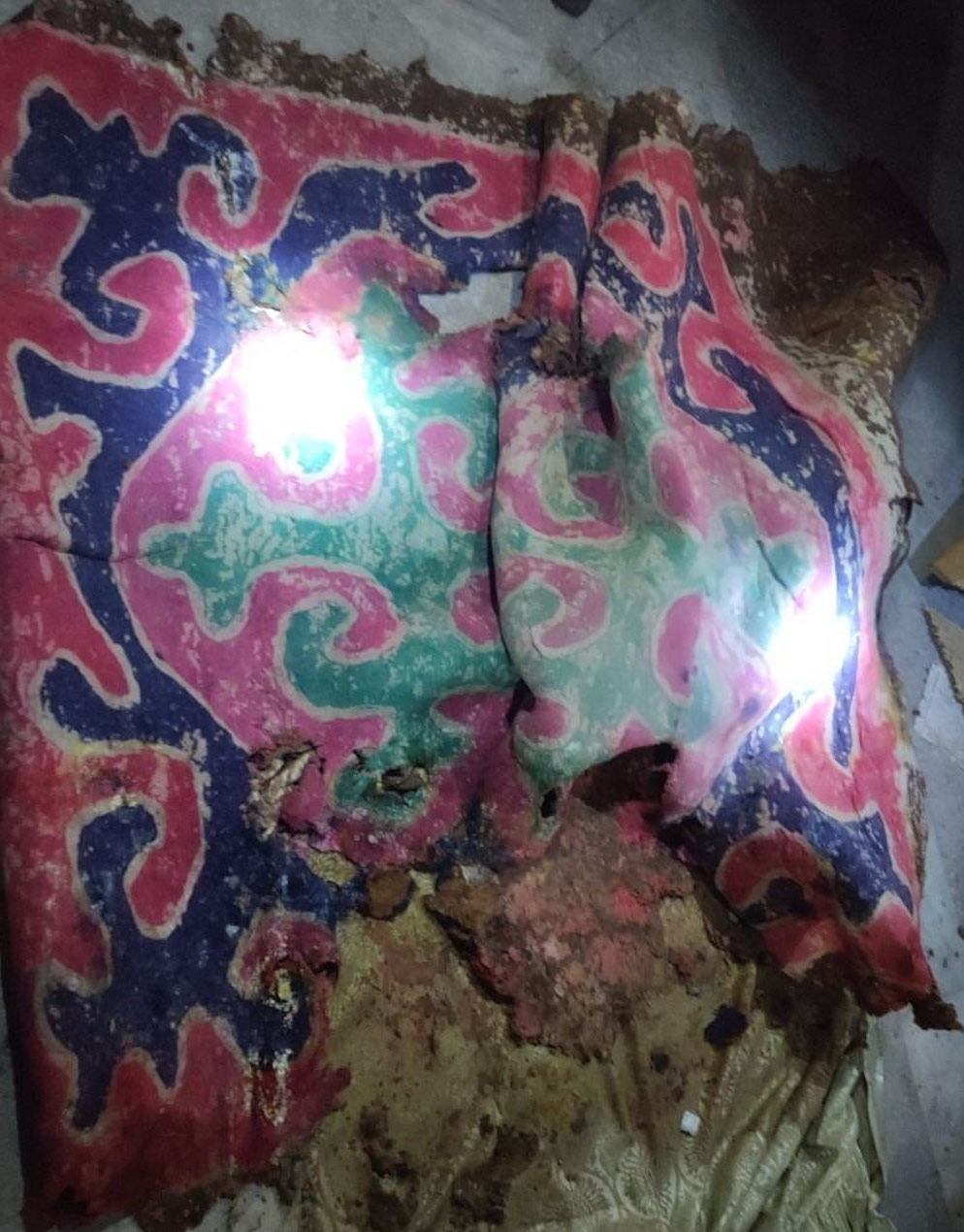 A traditional Kyrgyz rug, called a shyrdak, that was damaged in the fire. (Photo: Provided by a source involved in the museum’s activities)
A traditional Kyrgyz rug, called a shyrdak, that was damaged in the fire. (Photo: Provided by a source involved in the museum’s activities)
“They all burned, and the burnt spots were cut out.”
After the discovery, the letters show, the new museum administration organized a special commission that compiled a list of the damaged items. That list, included with the letters, shows that about 350 numbered and cataloged exhibit items were damaged or destroyed in the blaze. About 600 other items were also affected.
Many of the lost items were from the Soviet era, including the early revolutionary period, but among them were also several books published in the 19th century.
These findings raise the question of whether the damaged objects had been hidden deliberately in order to hush up their destruction.
Journalists obtained the letters from a source involved in the museum’s activities who wished to remain anonymous to avoid compromising further investigations.
The source said that the administration had been dishonest for years. “Since 2016, [the previous administrators] have been lying for five years that everything is fine,” the source said. “And now we find out this is simply not the case.”
The Ministry of Culture is aware of the damaged exhibits, the source said. It has not released any information about them to the public.
The head of the museum at the time of the fire, Anarkul Isiralieva, is no longer in a leadership position, but still works for the institution. She did not respond to requests for comment for this story.
Journalists reached out to multiple members of the museum administration, but they all failed to respond by publication time or declined to comment for this story. The Ministry of Culture also did not provide a response.
A Surprising Find
Among the information contained in the two letters and their attachments is how the damaged items were discovered. They indicate that museum employees discovered the burnt artifacts in the building’s basement during a cleaning.
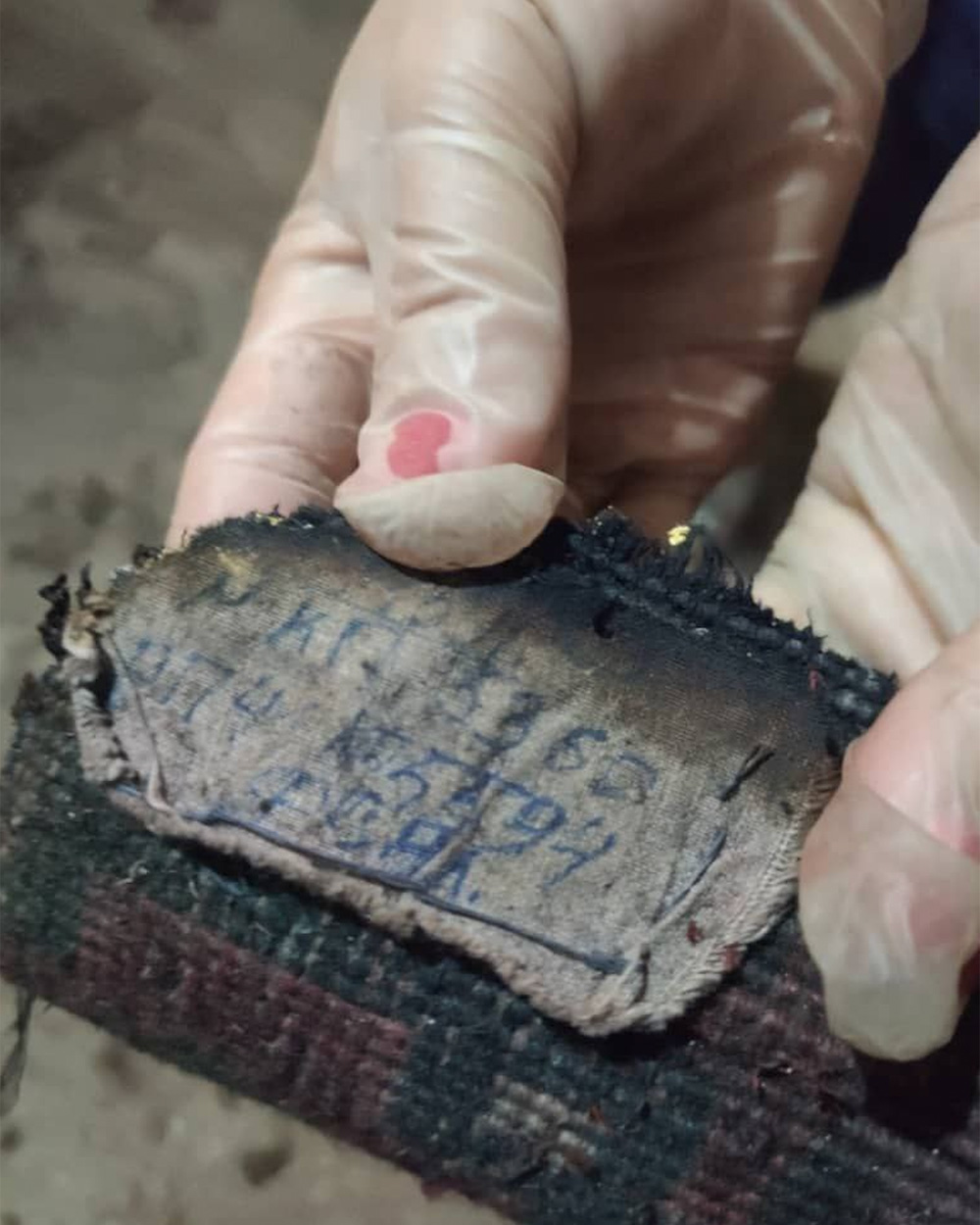 A museum worker holding a damaged artifact. (Photo: Provided by a source involved in the museum’s activities)
A museum worker holding a damaged artifact. (Photo: Provided by a source involved in the museum’s activities)
The source credits the current acting director of the museum, Gulbara Abdykalykova, with the discovery of the burnt artifacts. “She pushed and pushed [for the basement to be cleaned] and, finally, the workers discovered a storage space that the previous administration had hidden behind cabinets,” the source said.
In that enclosed space, they found nearly 900 burnt items. Of those, around 350 had identification numbers that clearly indicated they were from the museum’s collections.
Many of the remaining items also appeared to be museum exhibits, but because they were not properly tagged — their labels either burnt off in the fire, removed, or never affixed in the first place — it is impossible to determine how many of them were of historical value.
“According to a preliminary assessment, the items belong to the main, auxiliary, reference, memorial, and gift collections of the museum,” one of the letters reads.
The 350 damaged items with identification codes include four carpets, about 300 photos and documents, and 40 historic signs and posters. The other objects include books, magazines, papers and documents, and four traditional Kyrgyz rugs. Journalists were unable to assess their value.
Competing Narratives
Since the fire erupted in the museum’s conference hall on July 22, 2016, it has been all but impossible to get a straight answer, either from the museum or from the government, about what actually happened that night.
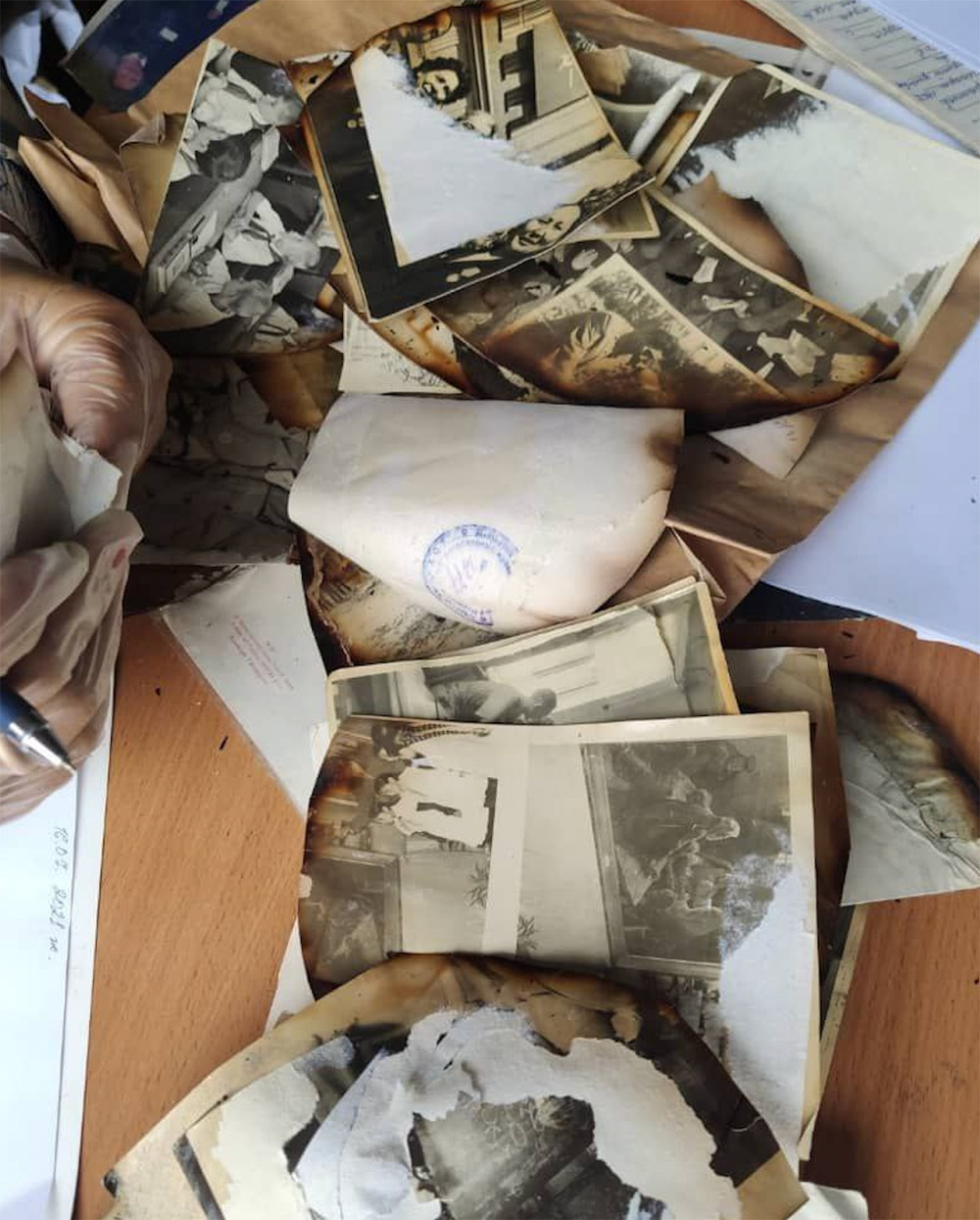 Partially burned historical photographs from the collection. (Photo: Provided by a source involved in the museum’s activities)
Partially burned historical photographs from the collection. (Photo: Provided by a source involved in the museum’s activities)
In the wake of the blaze, the Kyrgyz government published a press release assuring the public that not a single exhibit had been damaged. According to the authorities, the fire started in a storage space next to the conference room where items of no value were held.
However, a few days later, Isiralieva, the museum director at the time, told a local newspaper that one exhibit item had indeed burned during the fire: an old yurt that was already set to be decommissioned. The rest of the museum’s exhibits had been removed from the premises in advance of reconstruction and were stored in a secret vault, Isiralieva said.
For five years, the official narrative that the exhibit items were safe and sound in secret storage seemed true. But then OCCRP and Kloop obtained internal museum documents proving that it wasn’t just the yurt: 18 carpets from the main collection and a number of felt items, including examples of traditional Kyrgyz floor coverings known as shyrdak, had also been seriously damaged.
The documents showed that an interdepartmental commission assembled to assess the security of museum items after the fire found that the exhibits were dilapidated and had little value.
When OCCRP and Kloop requested a comment from the Ministry of Culture for the previous story, officials advanced that same narrative: the damaged items were decrepit and some had been identified for elimination as far back as the 1990s. The only reason they had not been discarded was that, due to renovations, the museum was unable to conduct a formal inventory.
Taken together, the previous documents suggested that only 24 dilapidated items were destroyed in the fire, including just five carpets. The documents contained no information suggesting 350 more exhibit items had been damaged or destroyed.
There have also long been indications this narrative was not entirely true. According to several museum employees who were interviewed by OCCRP and Kloop in 2020 and 2021, the carpets were valuable and in good condition, and were never supposed to be removed from the collections.
Journalists also received documents showing that, contrary to the ministry’s statement, the museum had finished a complete inventory in 2013.
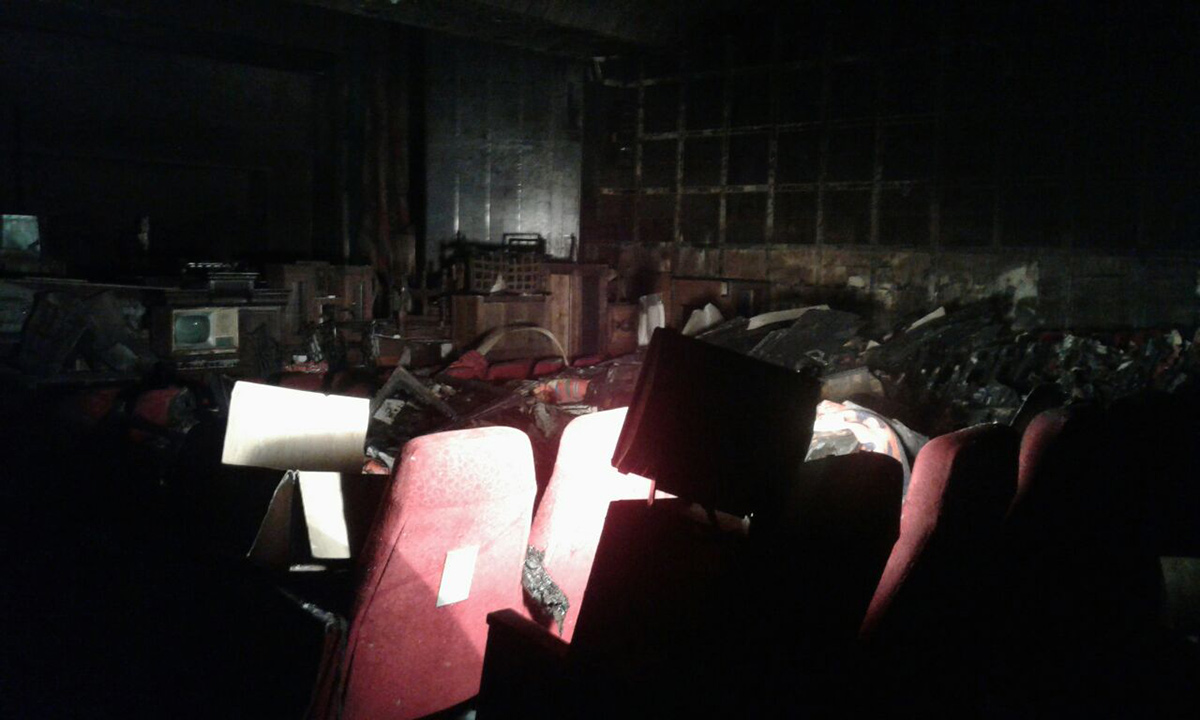 The museum’s conference hall after the July 2016 fire. (Photo: Provided by a museum employee)
The museum’s conference hall after the July 2016 fire. (Photo: Provided by a museum employee)
Criminal Case
Officials have also offered contradictory explanations about where the exhibits were located at the time of the fire.
While Isiralieva claimed that all the exhibits had been removed from the museum months before the fire, museum staff and documents from the interdepartmental commission painted a different picture. They suggested that, at the time of the blaze, the conference hall was being used as a temporary storage space for exhibits. After the fire, some of these exhibits were transferred to the basement of the Ministry of Culture, while others were stored in the National Bank.
Exactly what caused the fire is still unknown. But a report by forensic experts who investigated it at the request of the Bishkek police ominously states that the flames originated from “an open fire source with the use of combustion accelerators.”
The report noted that the conference room showed signs of “multiple independent fires,” something typical for “combustion of spilled flammable liquid.” However, the experts did not draw an unequivocal conclusion about the fire’s cause, and the information they collected was not made public until OCCRP published its investigation.
Isiralieva has also made conflicting statements about the cause of the fire. Last year, she suggested to OCCRP and Kloop that the blaze was an arson, but later she backtracked. She said she had only ever been citing the forensic report, and never meant to say that she believed the arson theory.
In January 2017, the police opened a criminal case into the fire. The status of that case is unknown. When OCCRP and Kloop were preparing their investigation last year, the Interior Ministry did not respond to requests for comment.
